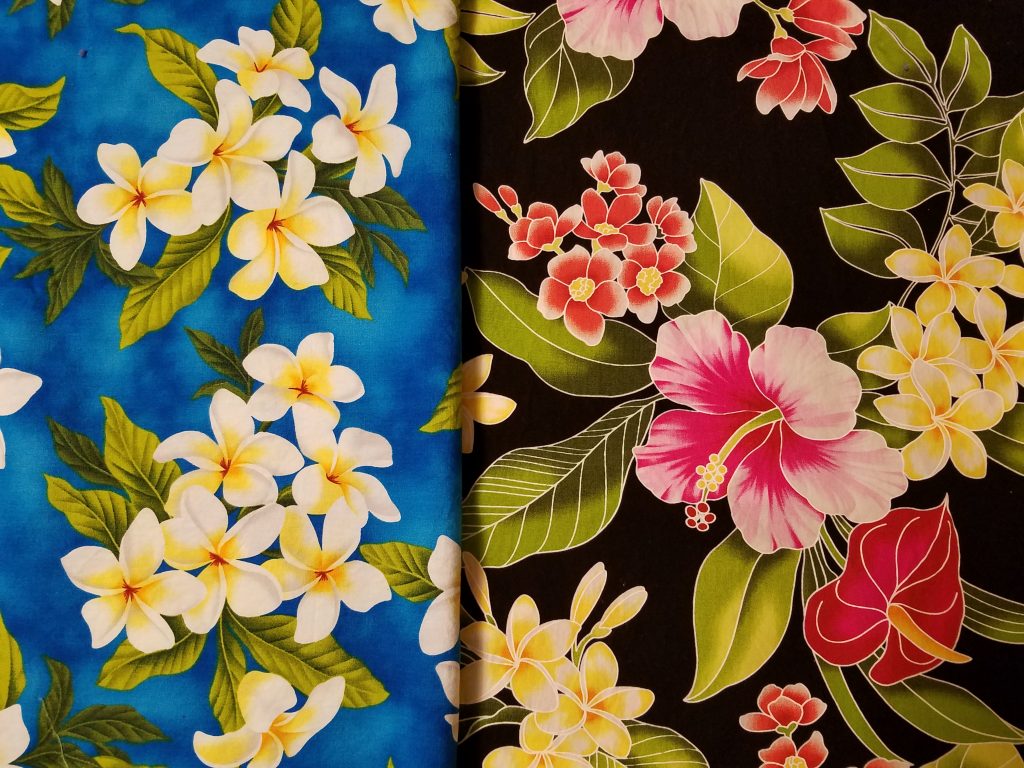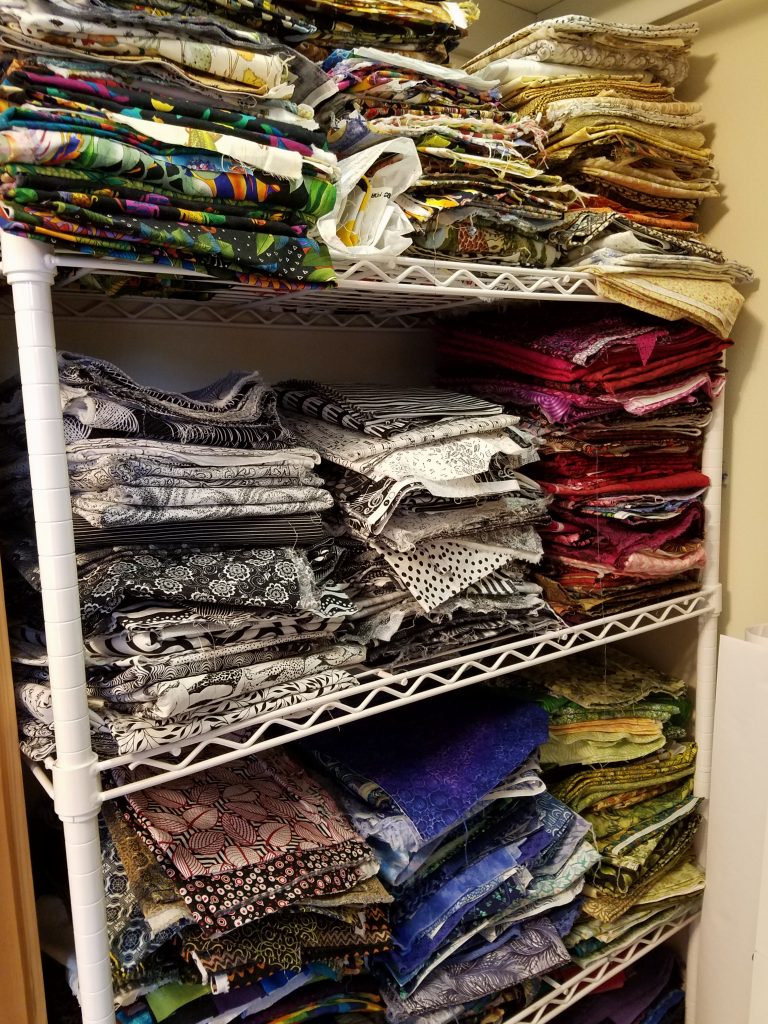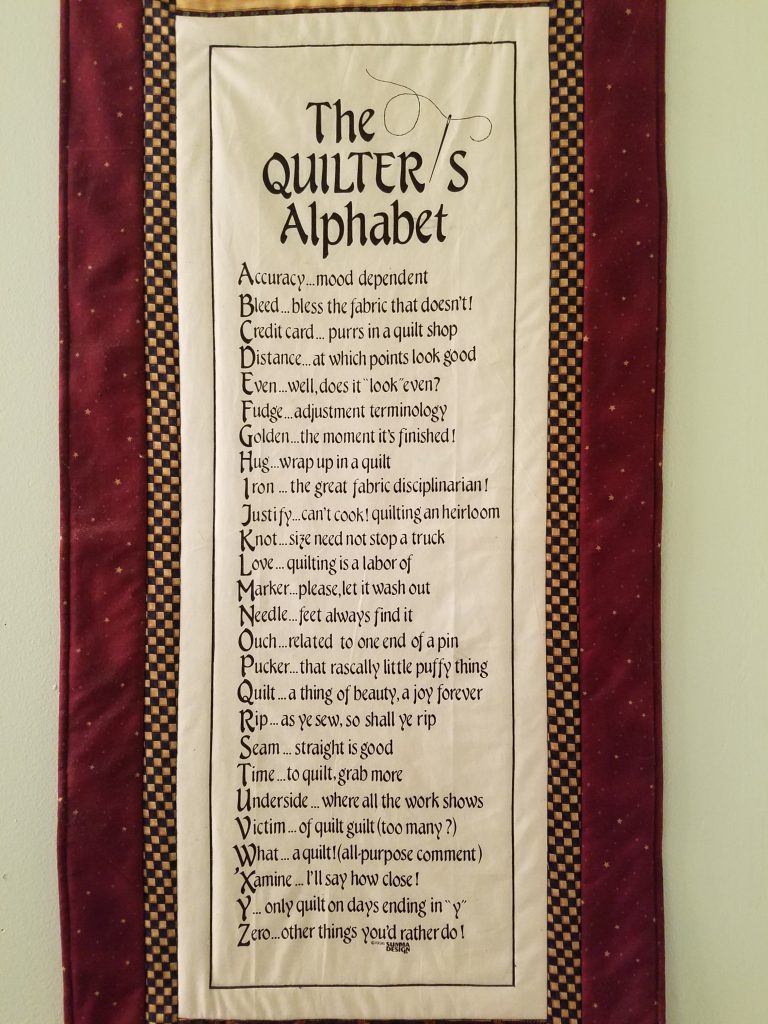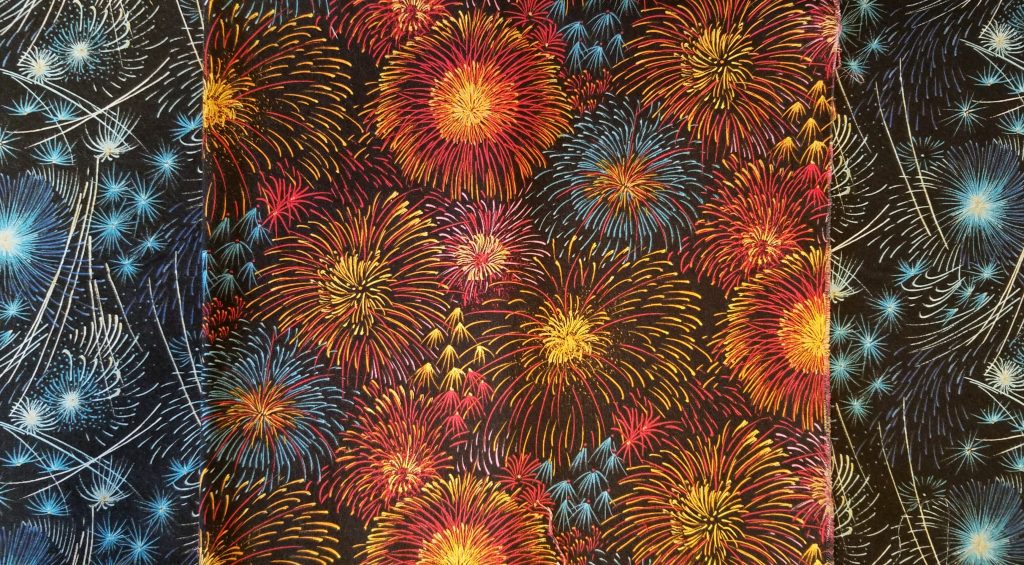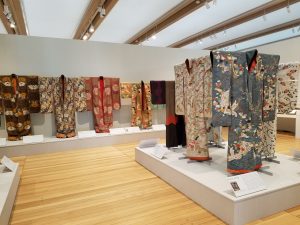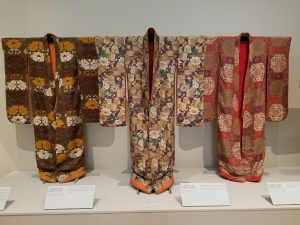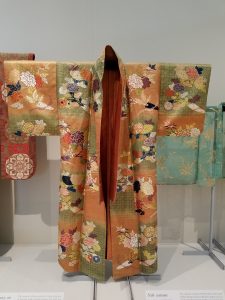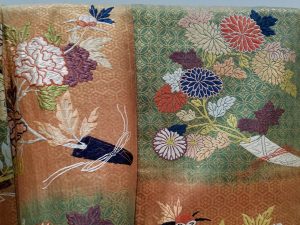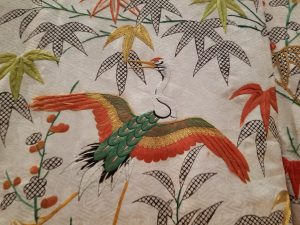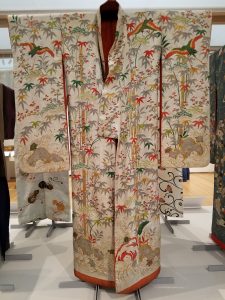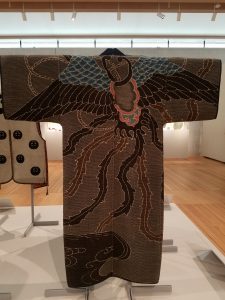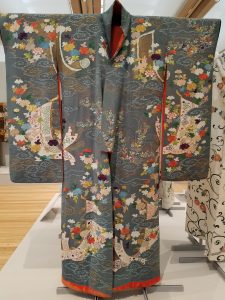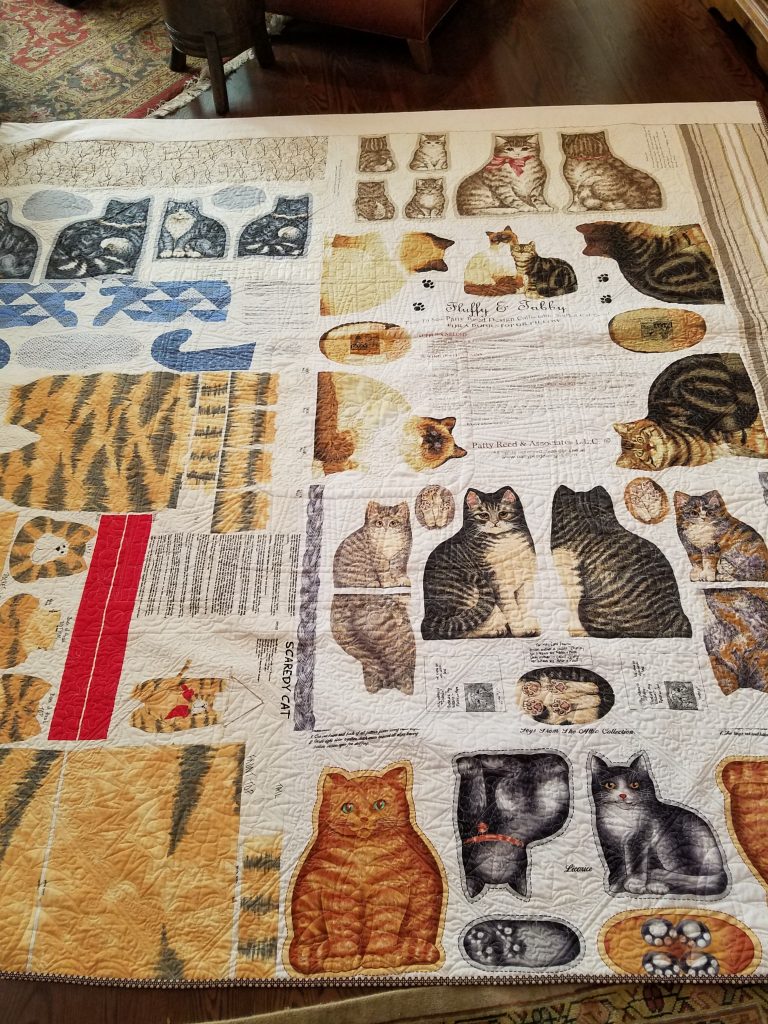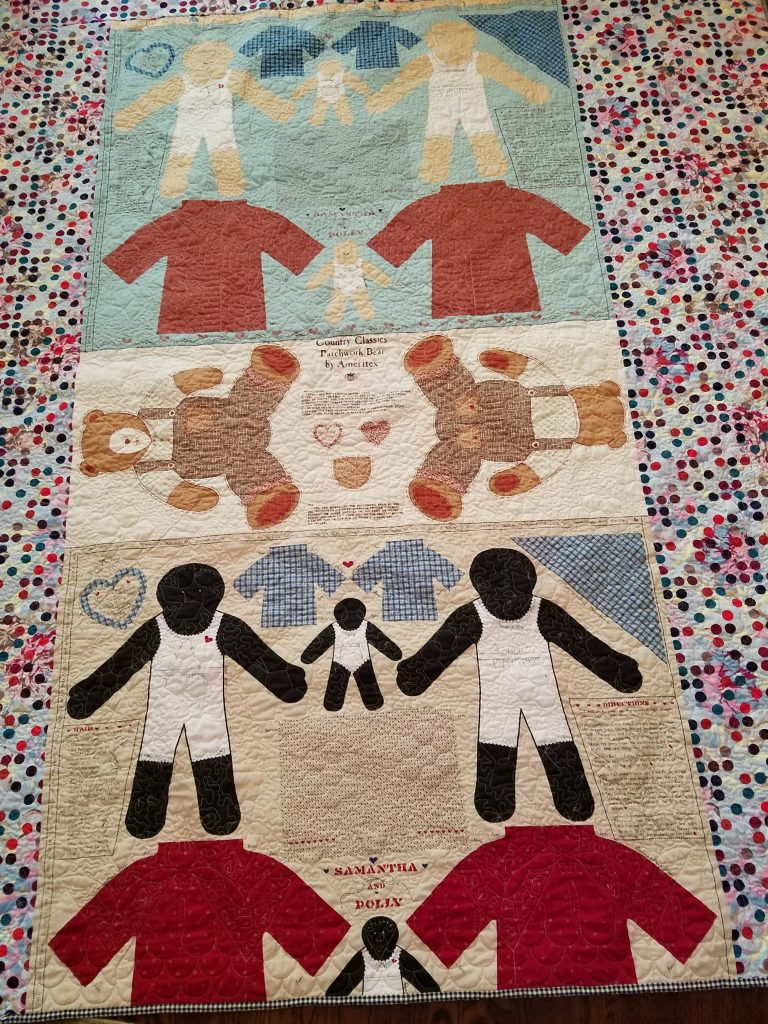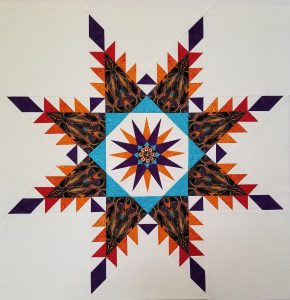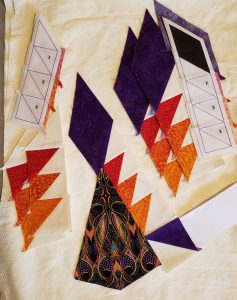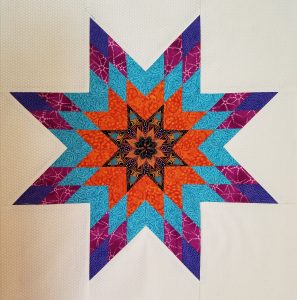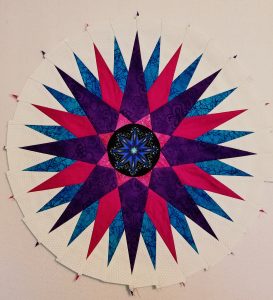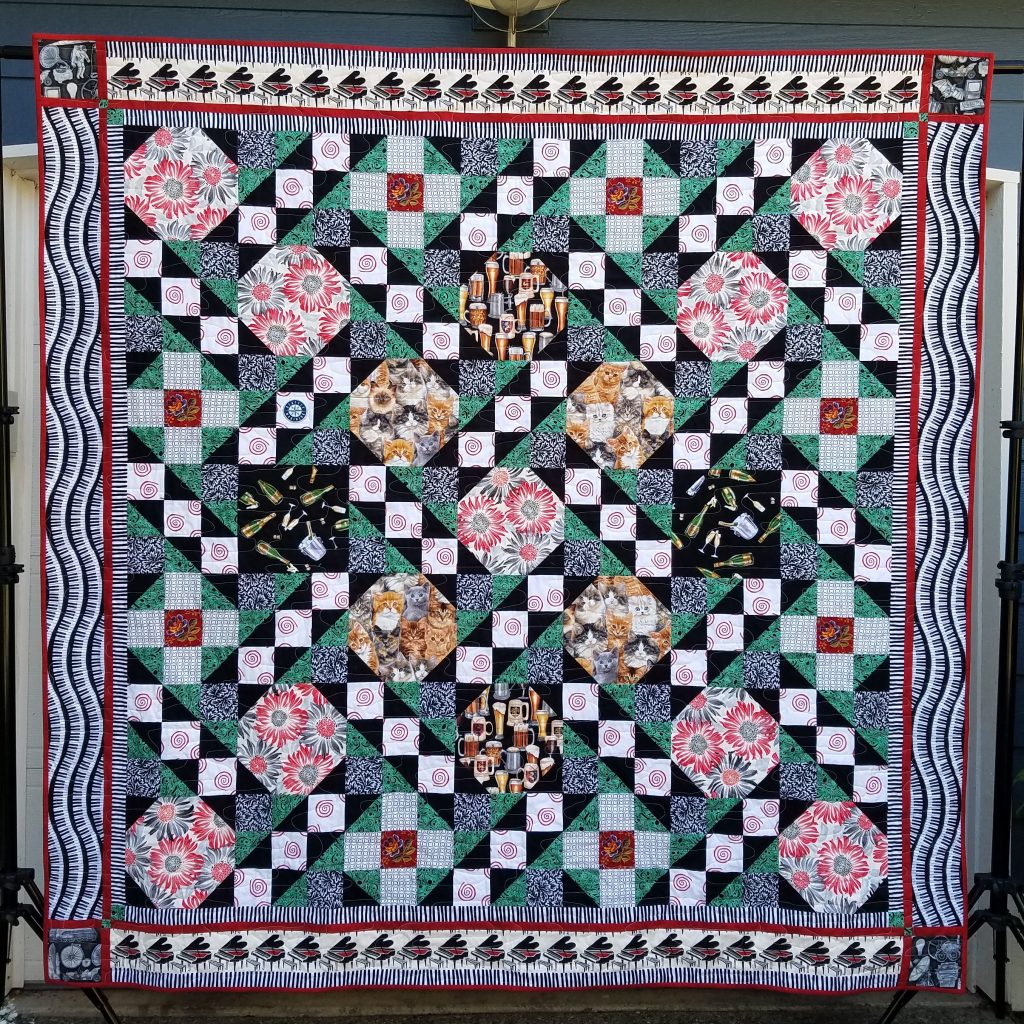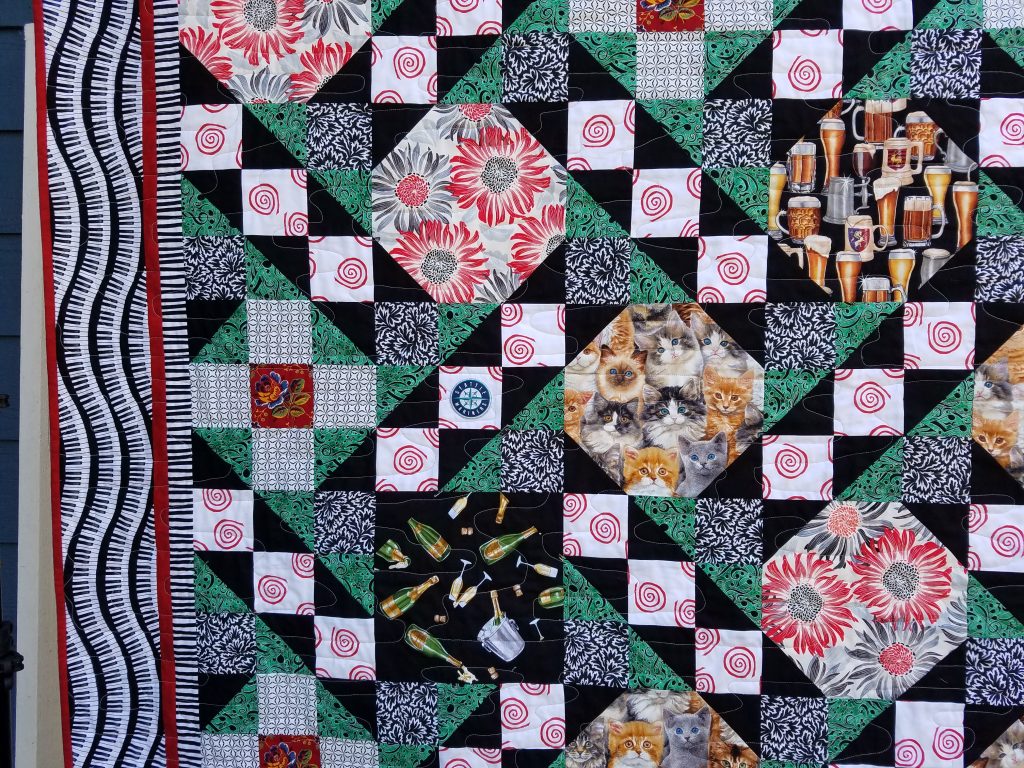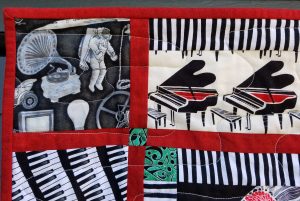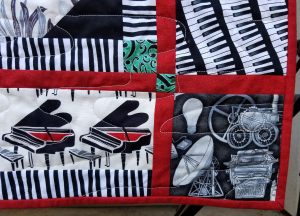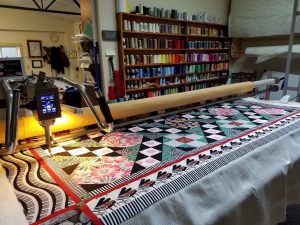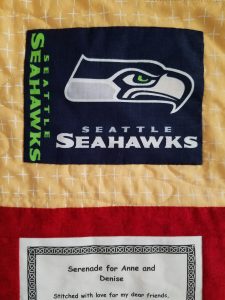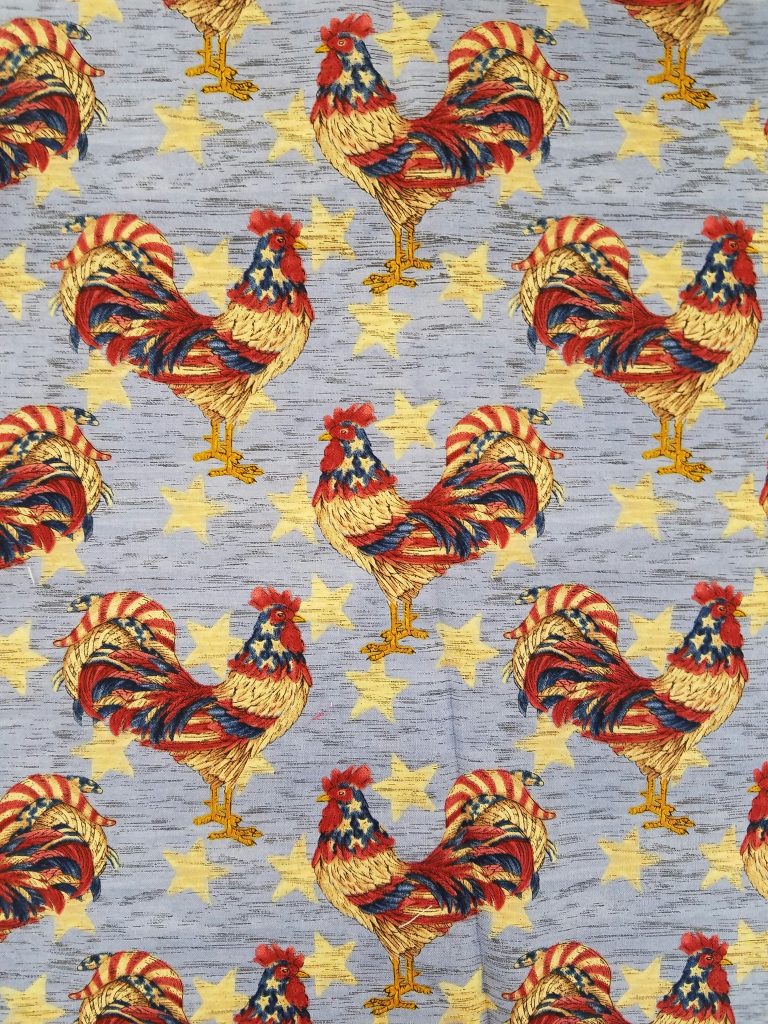Last week my blog featured a quilter, Ann Trujillo, whose beautiful quilts were show-cased in a special exhibit at our Kitsap Quilters’ Guild show. Two more quilts displayed at the show and illustrated here were also made by Ann, who thrives on complex, detailed projects. Millefiori-style quilts have become popular recently. Their amazing kaleidoscopic designs are made up of several English paper piecing shapes in which the fabric is often fussy cut to create spectacular results. When fabric is fussy cut, a particular motif or section of pattern is selected for the patchwork piece. Repeated identical pieces used in stars, hexagons, or other shapes generate wonderful patterns. Millefiori (Italian: [milleˈfjoːri]) is defined as a glasswork technique which produces distinctive decorative patterns on glassware. The term millefiori is a combination of the Italian words “mille” (thousand) and “fiori” (flowers).
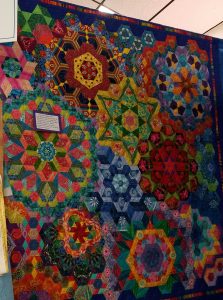
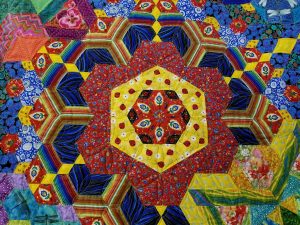
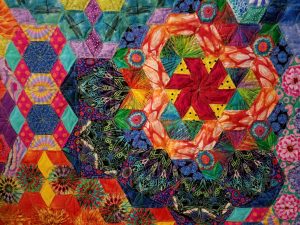
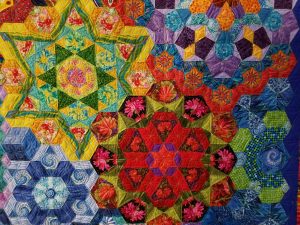
This quilt, Dance of the Dragonflies, took Ann a year to hand-piece and was quilted by Marybeth O’Halloran. The quilt is stunning from a distance, (the overall photo doesn’t do it justice as it was located in a dark spot), but there is so much more when you get up close to look at the all the detailed work. The designs formed by the combinations of the fabrics, many with fussy-cut motifs, are awesome. The pattern came from the book, New Hexagons, by Katje Marek and Ann was inspired by another guild member, Andrea Rudman, who was piecing beautiful sections and started a small group of quilters who met to share this passion.
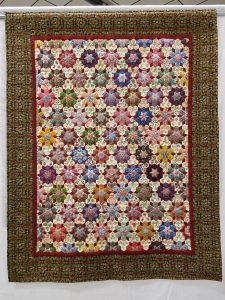
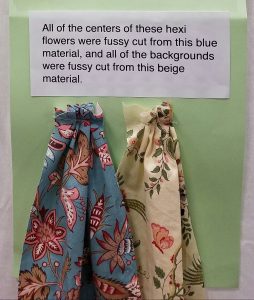
Remembering Donna, was made by Ann to honor one of our guild’s founding members, Donna Endresen, who passed away last year and is missed by us all. Donna loved reproduction fabrics and loved flowers. Take a look at the two fabrics and note that all the centers of the hexi flowers were fussy cut from the blue fabric and all the background fabrics in between the stars were cut from the beige material. It’s beautiful.
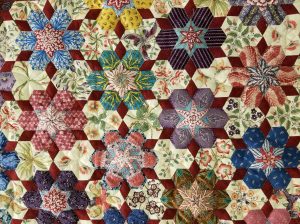
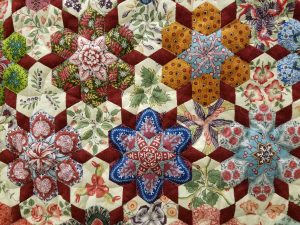
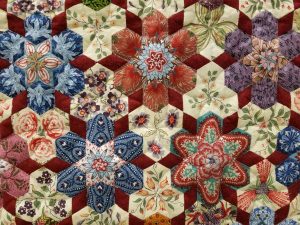

Ann used the pattern, Garden of Fortgetfulness, to make this quilt and it was quilted by Gladys Schulz.

